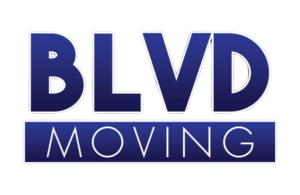Homeowners often turn to renting a U-Haul trailer when considering a do-it-yourself (DIY) move to a new home. Check out our guide below for tips on how to handle the process from start to finish, including what to expect on moving day, associated costs, trailer options, and when to consider renting a moving truck instead.




Before Renting
Compare the rental rates of U-Haul to other moving companies, such as PODS or Penske, before committing to one moving method. Trailers are a helpful and economical choice for some people who are moving, but they’re not for everyone.
Explore other pre-rental tips in the dropdown sections below:
Get the Right Size Trailer
U-Haul offers a variety of cargo trailers and utility trailers, so book the trailer size that best matches your needs. Cargo trailers are aerodynamic and enclosed and come in three sizes: 4 feet by 8 feet, 5 feet by 8 feet, and 6 feet by 12 feet. Utility trailers are better suited for movers who need vertical space for towing furniture and come in five sizes, starting at 4 feet by 7 feet and going up to 6 feet by 12 feet.
Rent Far in Advance
Make reservations as soon as you can, especially if you’re moving between June and September, which is the peak moving season.
Budget for Costs Before and After Renting
U-Haul trailers start at $14.95 per day, and the price increases if you need damage protection coverage, roadside assistance, or moving supplies. There are no per-mile charges for trailer rentals or towing equipment, so cross-country or long-distance moves won’t affect the cost.
Verify Insurance Coverage
Ensure your car insurance covers the trailer, and consider adding a related policy if it doesn’t.
Have the Right Hitch
U-Haul trailers require a car trailer hitch for towing, and U-Haul provides hitch installation services if you don’t have one. Our guide on how much it costs to install a trailer hitch covers pricing in more depth. If your car can’t handle towing the extra weight, consider a U-Haul truck rental instead.
Picking up the Trailer
Ensure your U-Haul trailer rental documents are in order before leaving the pickup location. It’s also important to complete the following tasks:
- Gather all rental documents: You must sign a rental contract and show a valid driver’s license to secure your trailer at any U-Haul location. A deposit is necessary if you’re paying with cash but not if you’re using a credit card or debit card.
- Inspect the trailer: Either you or a U-Haul representative will need to assess your vehicle’s towing capacity, the tow hitch’s weight rating, the rating of the hitch ball mount and drawbar, the ball rating and size, wiring, and trailer tire pressure.
- Perform safety checks: Check the brakes, tire pressure, and other necessary parts of your car to ensure your vehicle can safely tow the trailer. Secure all loose items and make sure the hitch is secure.
- Verify that all equipment is present: Don’t drive until you’re sure you have your tow dolly, furniture pads, moving boxes, tape, tie-down ropes, plastic stretch wrap, and other necessary items.
Driving With the Trailer
The trailer and your belongings will affect your speed, braking, maneuverability, and more. Here are a few things to consider when towing your U-Haul trailer:
- Expected gas mileage: Gas mileage will be better for light loads—and more expensive for heavier loads.
- Going through small passageways: Be aware of your trailer’s dimensions when entering low or narrow passages.
- Maneuvering: Don’t exceed 55 miles per hour, and remember that trailers require a wider-than-normal turning radius. Drive forward into a parking space whenever possible, and if you must back up into a spot, place your hand on the bottom of the steering wheel and look over your shoulder.
- Packing the trailer: The trailer should have about 60% of the cargo weight in front and 40% in the back. Put heavier items on the bottom and lighter items on top, and secure everything with moving straps.
- Speed and braking: Towing heavy items affects braking and acceleration. U-Haul recommends leaving between four and five seconds between you and the car in front of you.
Dropping off the Trailer
Save money by following the correct drop-off procedure, which includes the following:
- Drop-off time: Missing your drop-off date could amount to penalties, but U-Haul has an option for dropping off trailers after hours. Follow the after-hours drop-off process through the U-Haul app.
- Final inspection: Follow U-Haul’s process for documenting the trailer’s condition. U-Haul will charge additional fees for damages.
- Final receipt: Get a final receipt in person or by email to verify the return and set the deposit refund into motion.
Our Conclusion
We recommend comparing quotes from several truck rental companies and scheduling your rental as far in advance as possible. Choose a trailer that best suits your moving needs and budget. If you do choose a U-Haul trailer, follow each step outlined by the company’s rental policy to avoid incurring needless rental fees.
FAQ About Moving With a U-Haul Trailer
Can you only go 55 mph with a U-Haul trailer?
U-Haul recommends only going up to 55 mph with a U-Haul trailer. Always reduce your driving speed when towing, and follow posted speed limits.
How can you travel safely with a U-Haul trailer?
You can travel safely with a U-Haul trailer by performing safety checks and fastening all your items with straps. Leave extra distance between you and the vehicle in front of you, typically about four to five seconds.
What is the maximum recommended load for a U-Haul trailer?
The smallest U-Haul cargo trailers have a maximum load of 1,600 pounds, while the largest utility trailers with a ramp have a maximum load of 3,710 pounds.



